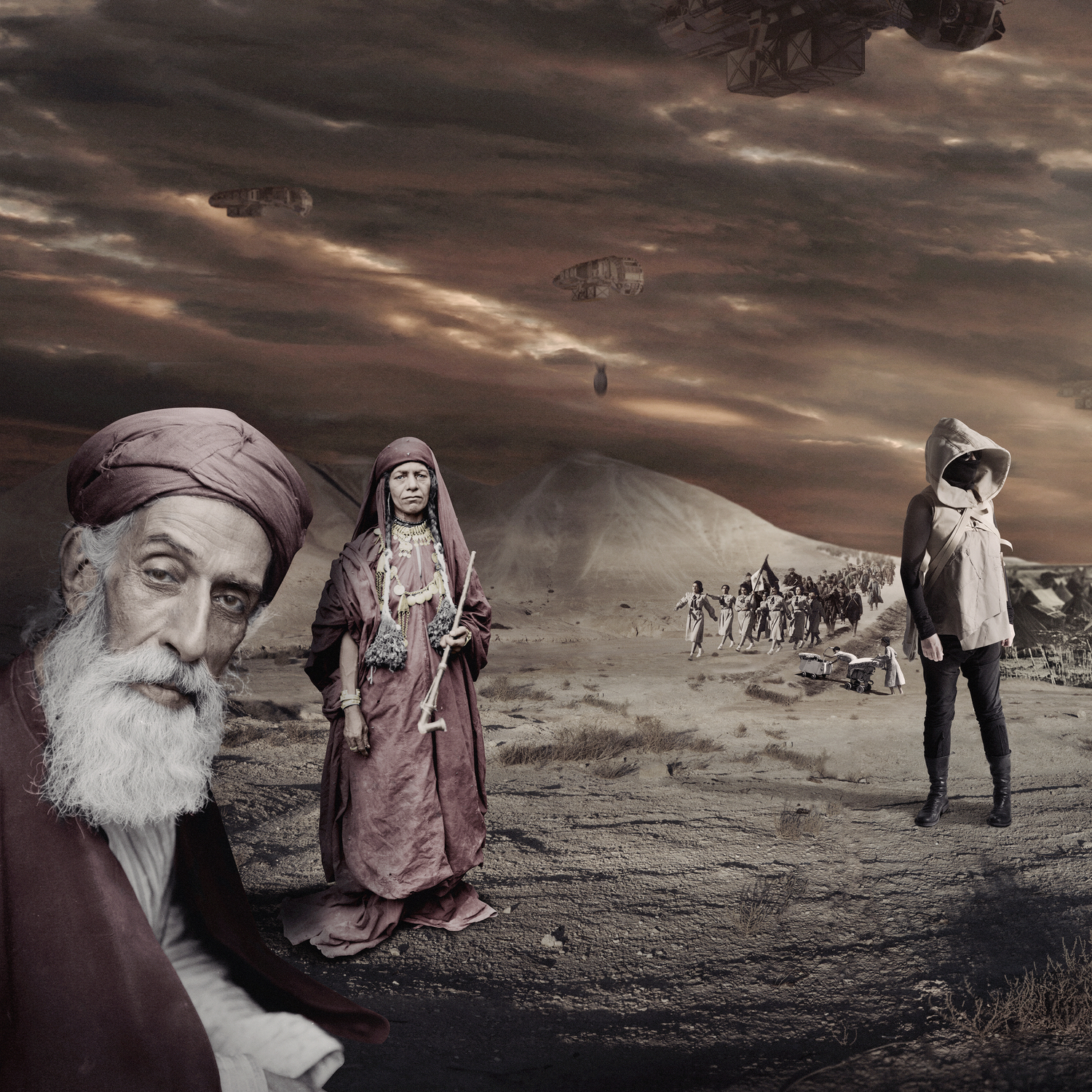Palestinian artist Larissa Sansour dishes out the final installment of her sci-fi trilogy
Born in Jerusalem, Larissa Sansour is an acclaimed Palestinian artist whose works have been exhibited throughout the world. Her interdisciplinary work, ranging from video and photography to installations and sculpture, is immersed in current political discourses surrounding the Palestinian question. Her most recent exhibition, In the Future, They Ate from the Finest Porcelain, currently on display at Dubai’s Lawrie Shabibi Gallery, presents a commentary on Israeli claims to Palestine through archaeological findings and excavations. Sansour’s film (made in collaboration with Søren Lind) blurs the lines between fiction and documentary, and myth and reality, championing Palestinian identity in the depths of time and space. By burying porcelain bowls decorated with kufiya patterns deep underground, Sansour’s protagonist puts forth the political legitimacy of Palestinians and their claims to Palestine, as well as provides future archaeologists with ‘evidence’ of past Palestinian existence.
Do you eat yourself from the finest porcelain?
Well, I guess the whole premise of the film is that this rebel leader narrator is setting up an elaborate operation in order for the future generations of Palestinians to obtain the basic privileges that history has so far denied them; so, it is basically a revisionist historical comment. Am I eating from the finest porcelain? Right now, maybe in my mind … but not according to the rest of the world. I want the rest of the world to see me as a person who is doing so.
This work is very much about who tells history, and how much myth and fiction are really a part of writing history. If the world does not realise that we exist, we might as well just bury some porcelain DNA for future archaeologists to find, as a stick in the wheel on currently accepted versions of history. Maybe the revisions that this porcelain will cause will tilt the balance in favour of the Palestinians at some point in the future. The film is also a commentary on how Israel uses archaeology as headline news, and how it has been instrumentalised, rather than been seen as a scientific method … Israelis wants to prove something, and therefore they dig to find evidence supporting a fiction already having taken the form of fact; they use archaeology towards their own political ends, and it is becoming a means by which to prove a continued historical presence entitling them to territories currently belonging to others.
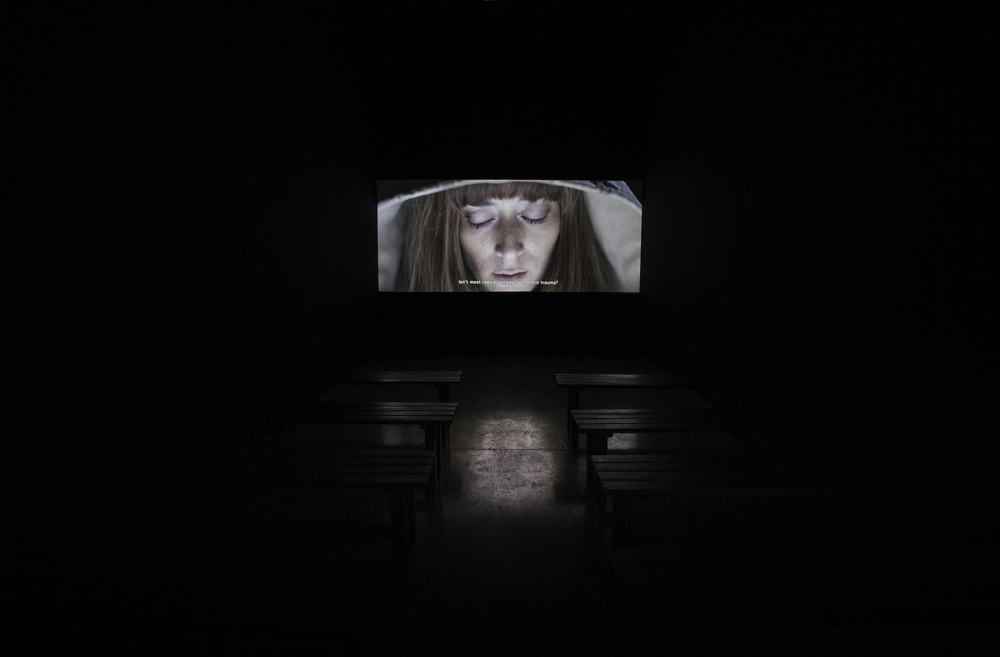
In The Future, They Ate from the Finest Porcelain screening at Dubai’s Lawrie Shabibi gallery (courtesy the artists and the gallery)
On a personal note, my own family holds papers showing that we own this particular piece of land; but an Israeli capable of ‘proving’ by way of religion or archaeology that they have been there for thousands of years needs no further justification than that to confiscate the land that I own by law.
Yes – as a Palestinian, I am very aware of the core issue of this conflict, and of how Israel has been using archaeology as a means to fabricate reality. The question, however, is, if I put myself in the position of the average spectator – who may not have been exposed to what’s been happening in Palestine – will it be difficult to grasp the messages you’re trying to convey? I think the film needs to be seen over and over again.
I agree with you. This is why the film benefits from being shown in an art space and in a loop, where people can watch it over and over again. It is kind of a strange balance to have, because you don’t want to spoon-feed people – otherwise a lot of what is being said will be lost. There is something inherent in art: things you can express visually go beyond a narrative-based way of describing things.
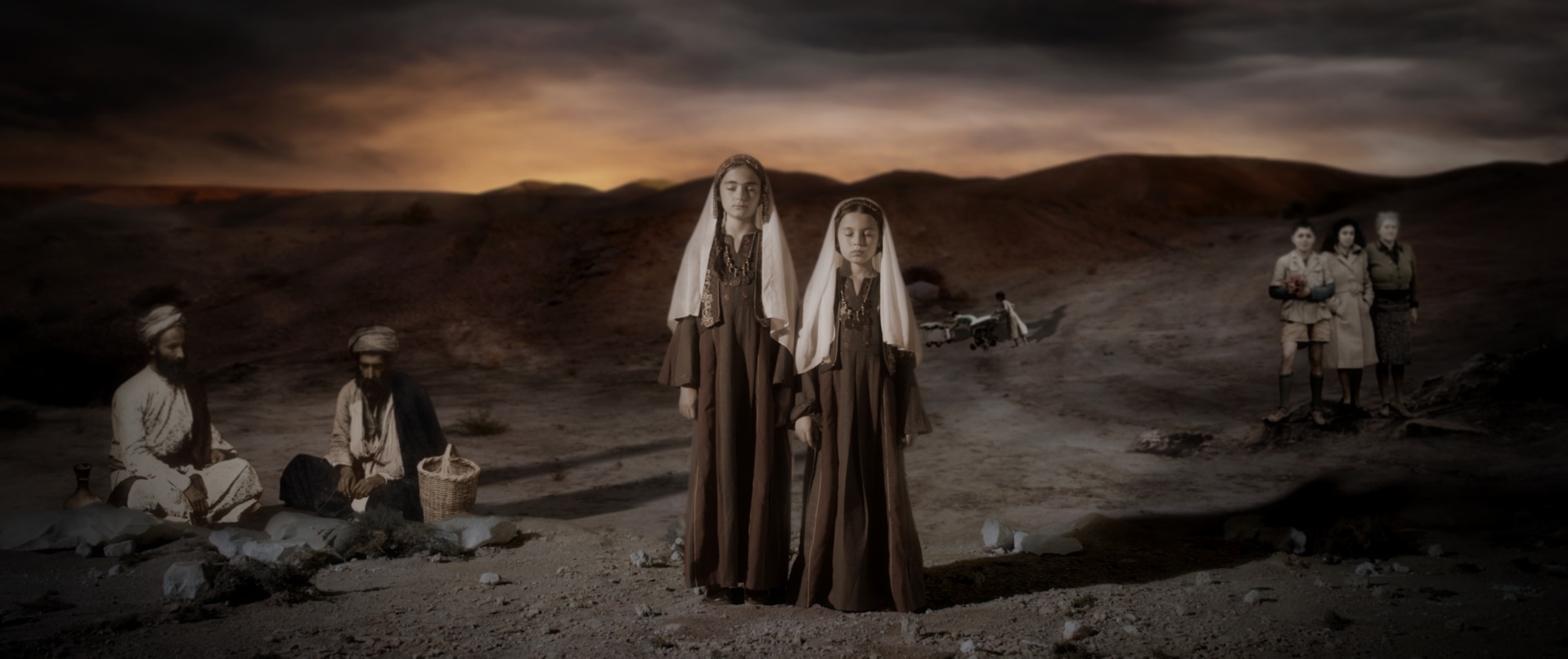
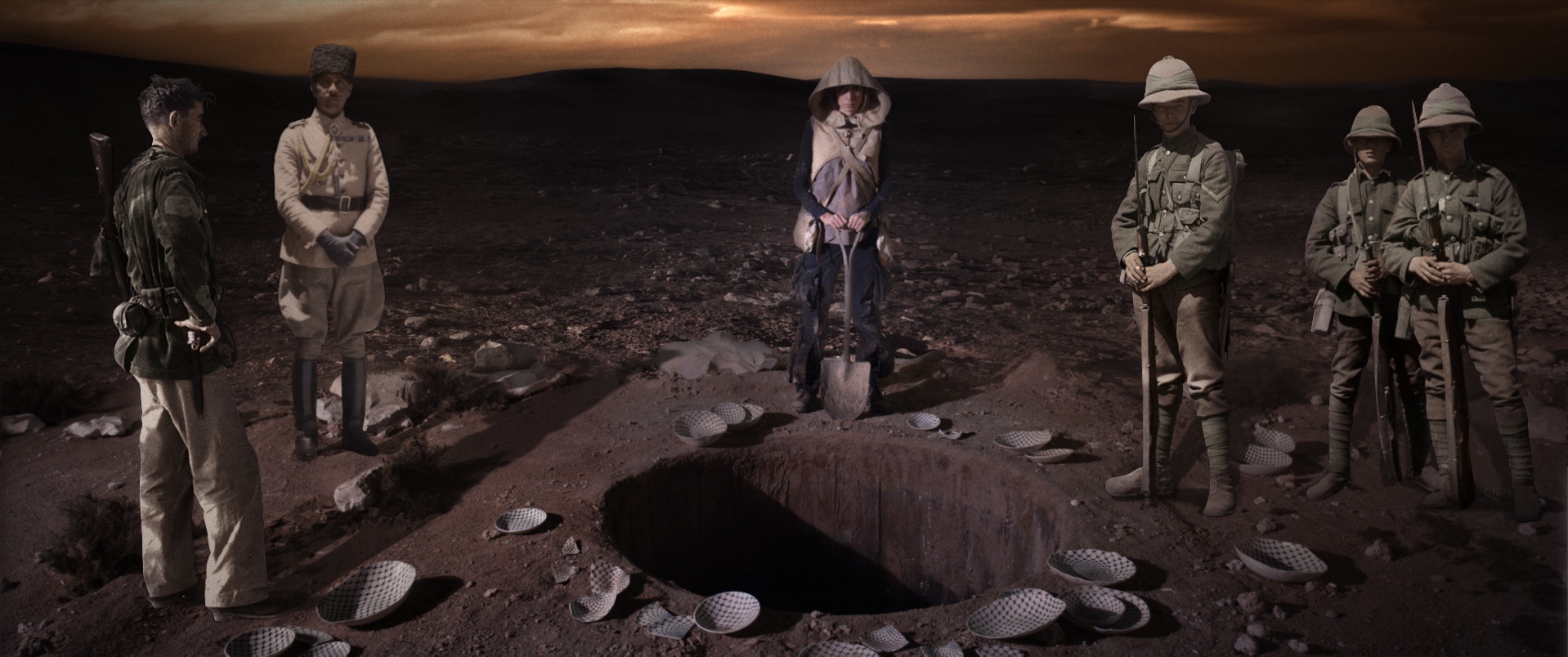
Stills from In The Future, They Ate from the Finest Porcelain (courtesy the artists and Lawrie Shabibi)
I think there are certain things that were really important for me to include in the film; only much later did I realise why I included them. There is something that precedes verbalisation in art, so it is very hard to make things clear when you’re talking about something so complicated; but I assure you that every detail has been completely revised multiple times. I have been working on this for two years with a screenwriter, with a total of 17 revised scripts.
The imagery of the film is spectacular, as is the narrative, especially as it’s told in vernacular Palestinian Arabic. Some of the sentences (which I even wrote down) have the quality of quotations that can be framed and hung on a wall. What inspired the choice of narrative and the way in which it’s told?
I worked with two other people, and they wanted the narrative to be in fus’ha (Classical Arabic) because they thought it would make it very ‘Shakespearian’. That is also another comment on the state we are in as an Arab community; I mean, everything has to be pan-Arab. You lose things that every particular region prides itself on. I wanted to write and speak the way I write and speak on a daily basis. Using the Palestinian dialect was also difficult because I felt I was inventing terminology in Arabic to suit a sci-fi film; it was difficult to deal with these linguistic problems. It was hard to come up with a language and terminology suited for Arabic sci-fi.
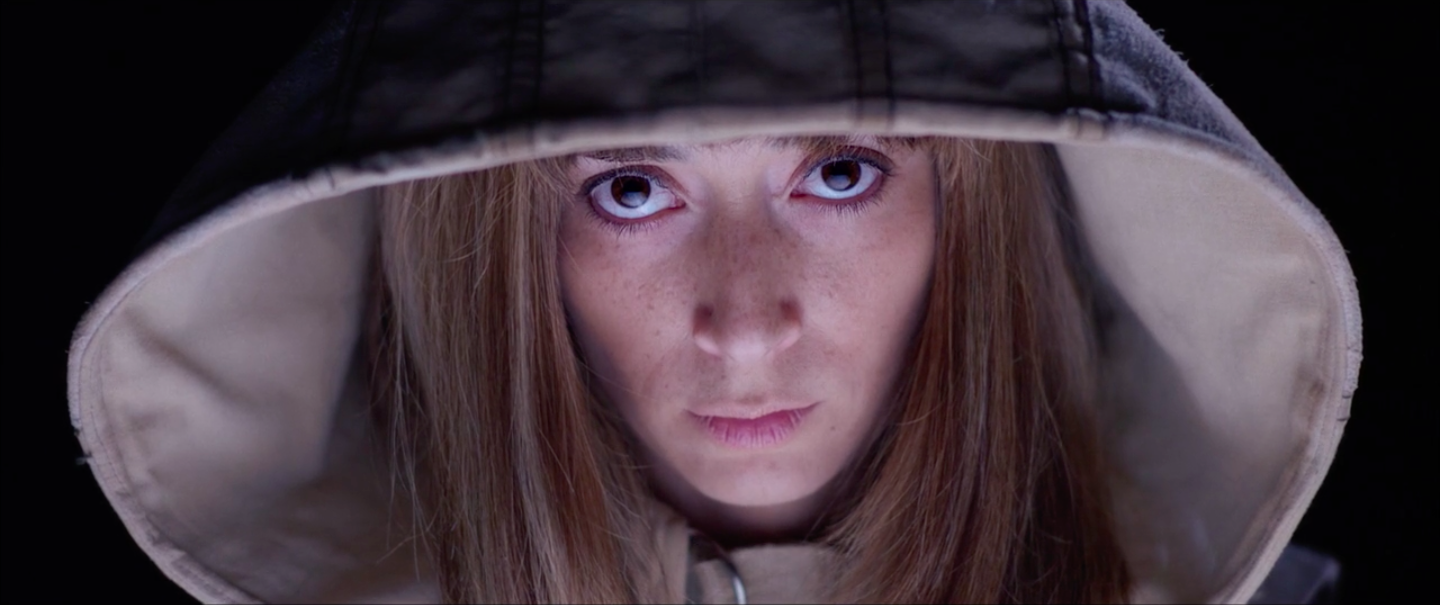
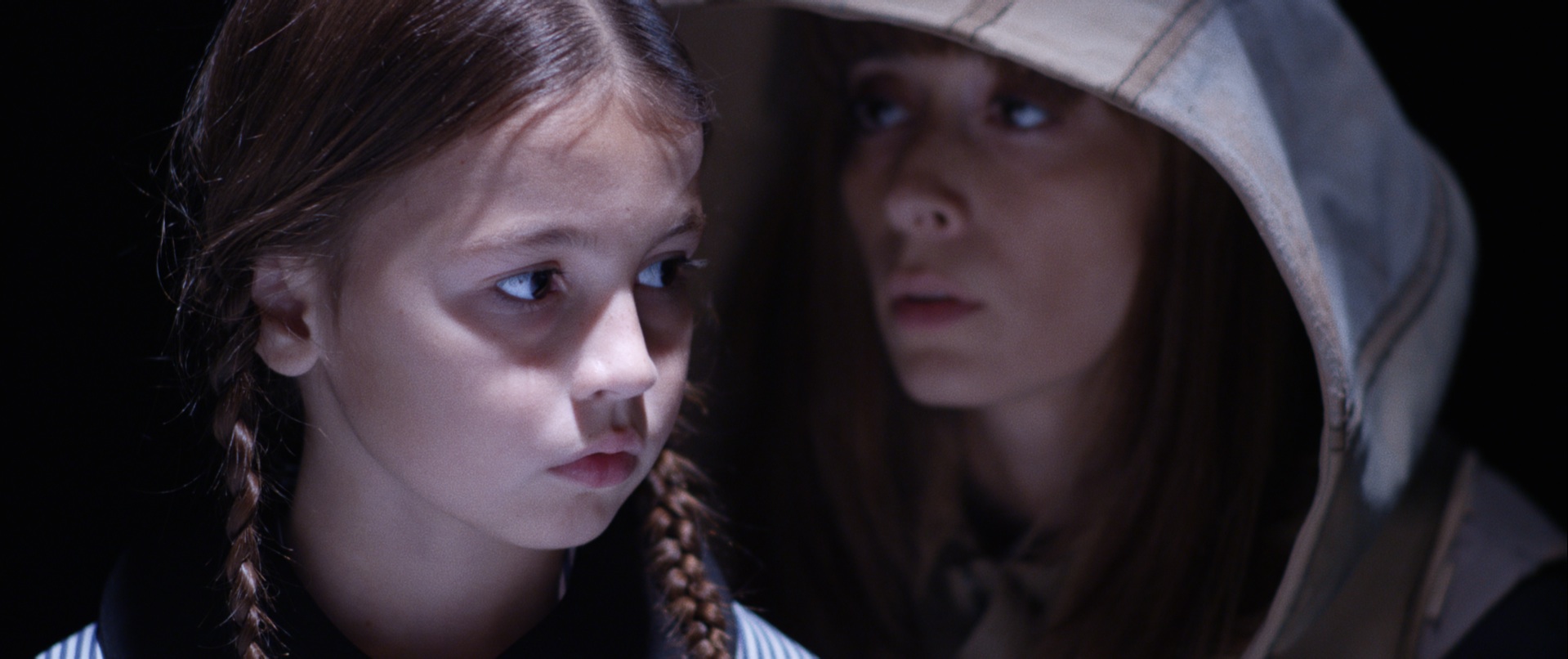
Stills from In The Future, They Ate from the Finest Porcelain (courtesy the artists and Lawrie Shabibi)
Speaking of sci-fi, one notices that most of your recent works – in particular, A Space Exodus (2009), Nation Estate (2012), and now, this one – contain elements of science fiction. Do you like it when people refer to your work as ‘sci-fi’? Do you think it suggests you’re detached from the reality of what is happening in Palestine?
Well, it’s fine with me; it’s the approach I’ve been using in my last three works, of which In the Future … completes the trilogy. I don’t necessarily like sci-fi myself. I haven’t seen Star Wars, for example, which is a ‘no-no’ for someone working with sci-fi. My entire team is raving about Star Wars. You know, spaceships and bombs are not things that are important to my film, obviously; but they elevate a Palestinian narrative to one on par with those of the rest of the world. Glossy sci-fi is preferable to us always being the subjects of documentaries, which is something I think is hurting us, more than anything.
This work is very much about who tells history, and how much myth and fiction are really a part of writing history. If the world does not realise that we exist, we might as well just bury some porcelain DNA for future archaeologists to find …
I wanted to engage with sci-fi because, first and foremost, it’s unexpected. It bends the rules for dealing with Middle Eastern politics, and it also has this fascinating way of offering you the space to deal with present problems; it’s by no means an ‘escape’ from what’s happening in Palestine right now. It actually offers a completely different approach to the problem, going head to head with the Apocalypse and the consequences of continuing to behave the way we do. Sci-fi has a cyclical nature that works very well with the Palestinian condition, because we always project a state; but at the same time, we always talk about the Nakba (lit. ‘Catastrophe’), so there is always this dialogue between nostalgia and ambitions for the future. The present is kind of lost in documentaries; it lives in this state of limbo, it isn’t real. That’s why I think sci-fi works really well.
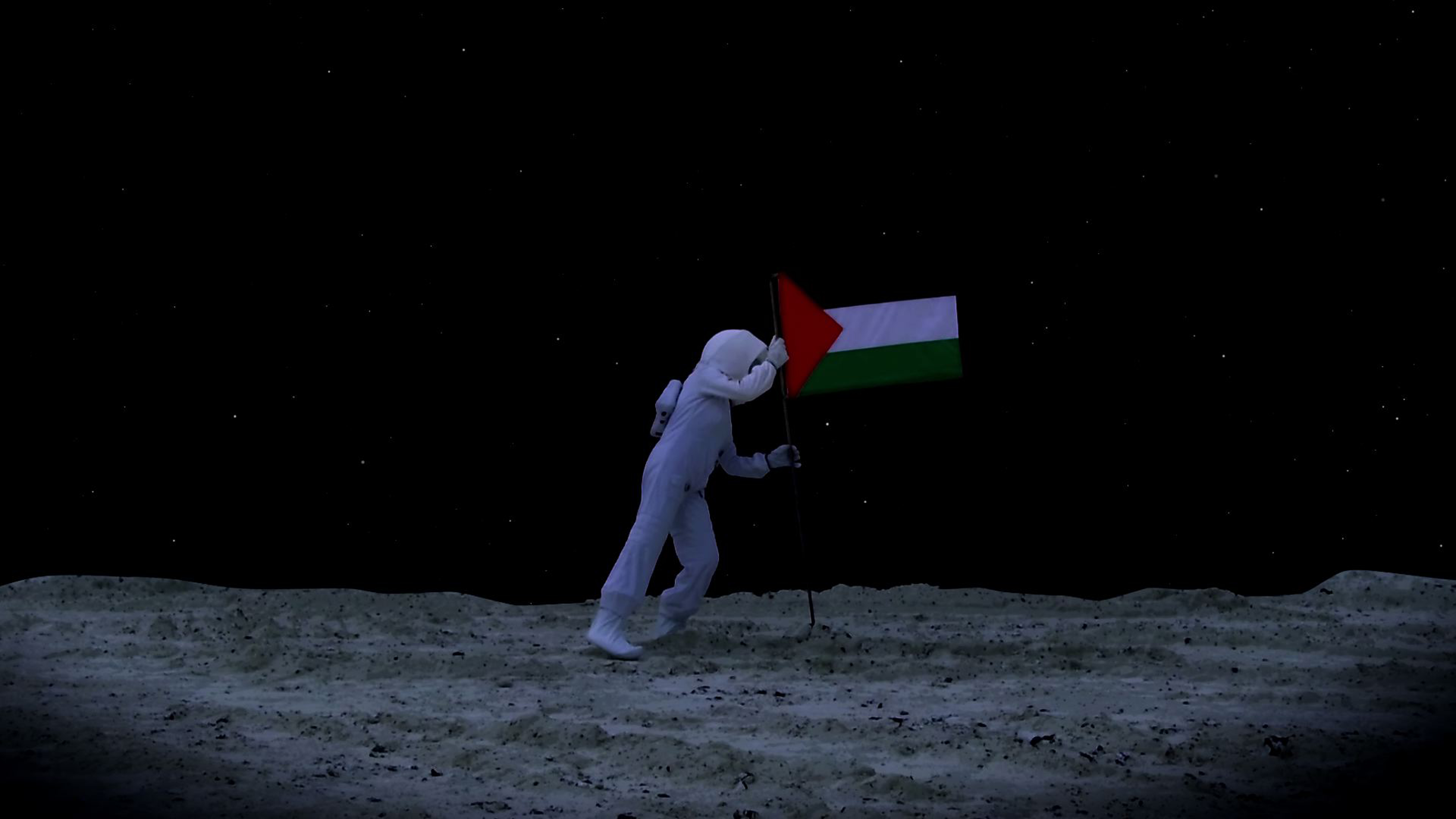
Still from A Space Exodus (courtesy the artist)
Let me ask you something else: it was mentioned in the film that Israelis use archaeology to create reality on the ground and use myths to form their identity; do you think we Palestinians also need to adopt the same approach? Given the fact that Palestinians actually have concrete evidence of their existence, do you think it is relevant for us to use the same method in the case of the porcelain plates?
Well, obviously this is a commentary on Israelis more than anything else, but it is true; it does pose a problem when you look at it this way. That is why at one point in the film, the psychiatrist says to the rebel, ‘wouldn’t claims made by the flesh-and-blood descendants of the existing population … be more legitimate?’, to which the rebel answers, ‘it was never a question of legitimacy. Our rulers have long since removed us from the equation. I am adding new numbers, messing with their maths’. The psychiatrist responds by saying, ‘but by giving rise to this counterfeit people, aren’t you accepting the erasure of your own?’, and the rebel says, ‘quite the opposite. They are us, and we are them. They will claim the land on our behalf’.
So, yes; the film posits a philosophical equation rather than really creating a nation. The rebel has been going through a traumatic experience and has been trying to find a solution. She has gotten into this mad frame of mind, and she is willing to go that far, just in case people aren’t convinced that Palestinians exist. It’s like saying that our enemy is ruthless, and if they exterminate us, we need to make a plan (e.g. burying DNA) so that no matter what happens, we will always exist.
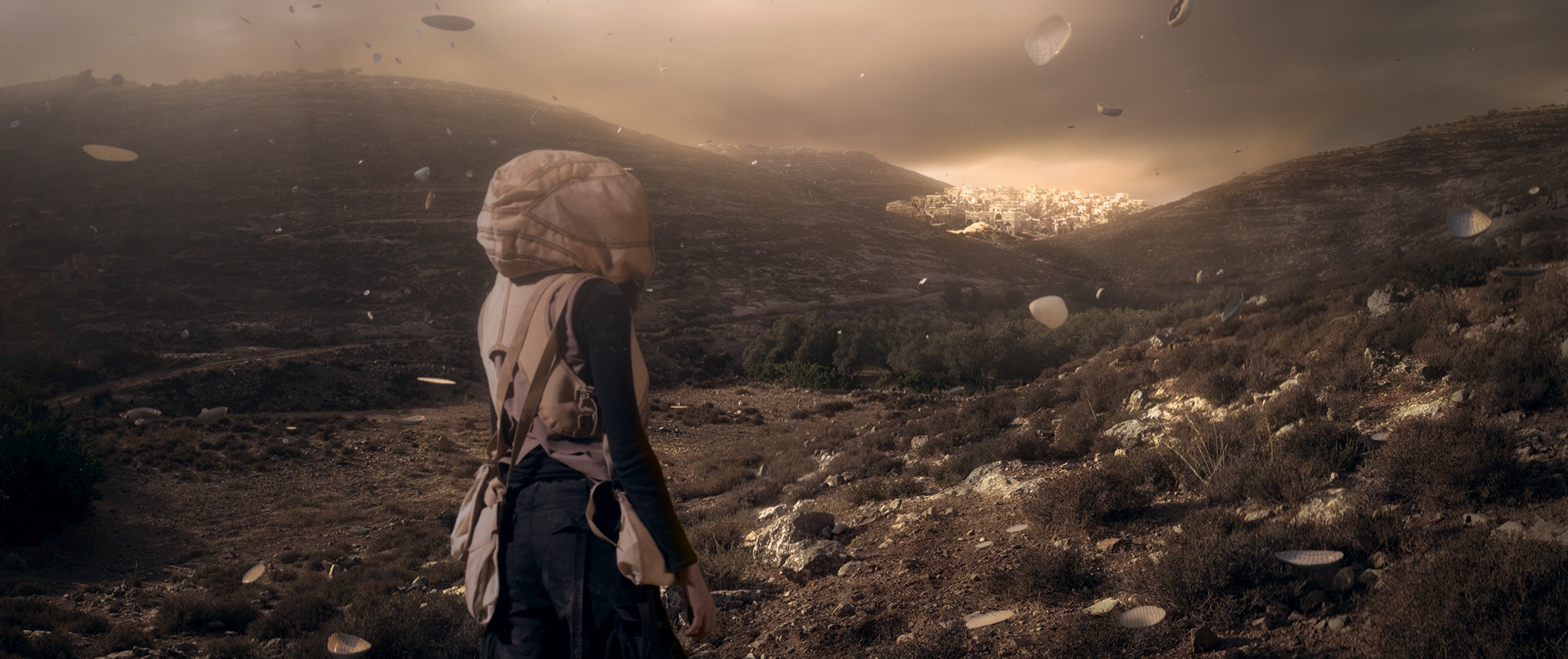
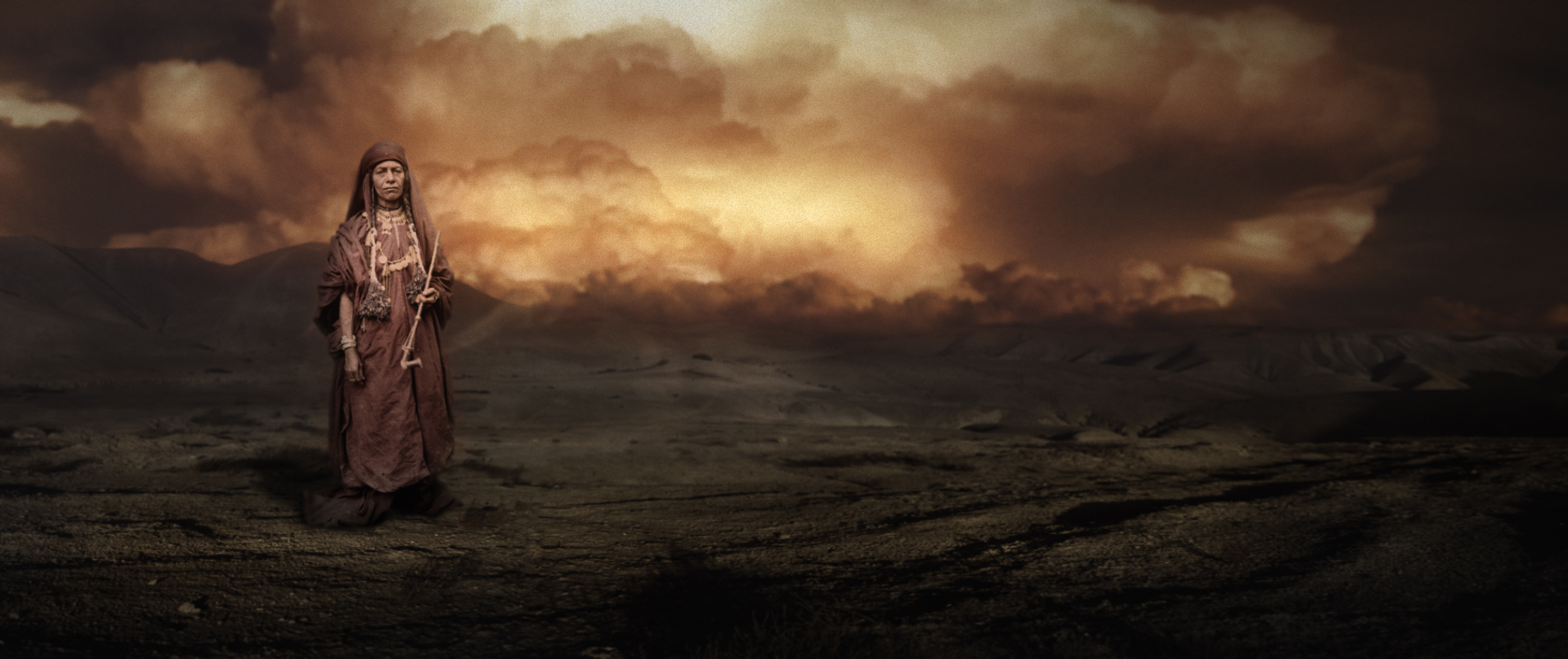
Stills from In The Future, They Ate from the Finest Porcelain (courtesy the artists and Lawrie Shabibi)
What first caught my attention was the title of the film, which uses both the future and past tenses at once. As you mentioned, Palestinians aspire for a future state, yet simultaneously continue to point out the Nakba. How did you tackle the issue of identity in your film? In other words, how do you explain the relationship between these contradictions (past vs. future, archaeology vs. sci-fi, etc.)? Are there even contradictions to begin with?
Yes, exactly. The title brings us back to our identity as Palestinians, and that is what I talk about in Nation Estate as well. It’s kind of overloaded with symbols you find amongst Palestinians like the key, the kufiya, the folk dresses, and all these [others] that are becoming more like artefacts for a museum than real things. The idea in Nation Estate was to make the building seem artificial and like a museum that housed all these symbols and artefacts we’ve gathered as Palestinians; but, do they really mean anything anymore? Other than that, we are resisting. The topic of identity also fascinates me, what we are. For example, if we do have a state, what are we going to look like? If you take away the resistance of Palestinians … I don’t know!
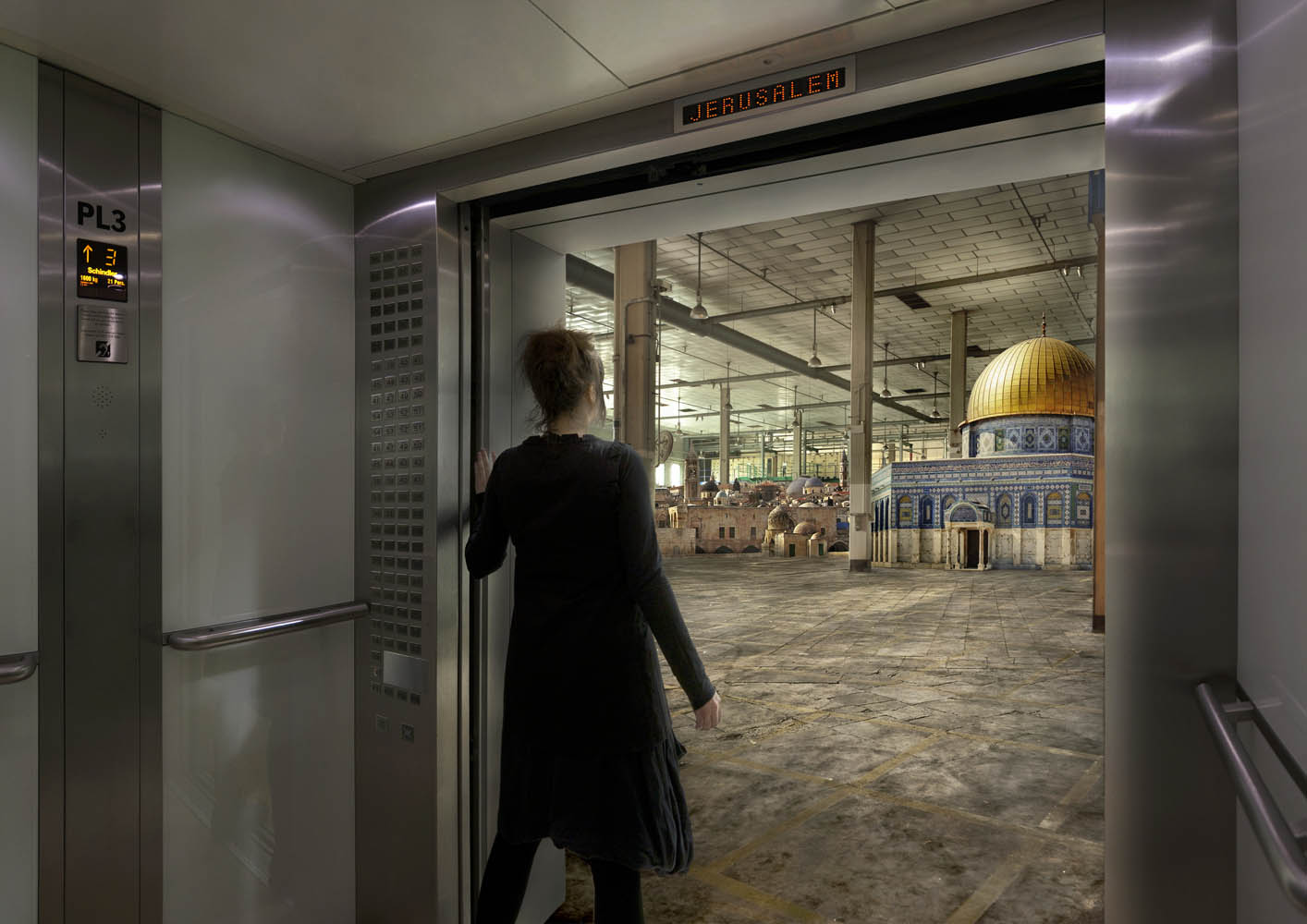
Nation Estate - Jerusalem Floor (courtesy the artist)
The resistance aside, if the conflict somehow ends, where does it leave Palestinian art? Because almost all Palestinian artists – including you – are immersed in the current political situation when producing art. The subject matter of Palestinian artists is almost always related to the occupation, conflict, etc.
I think art, no matter where it comes from, has always been political. Even though the Constructivism of 1930s Russia looked purely abstract to the naked eye, it was entirely political. Artists wouldn’t have been imprisoned, blacklisted, and killed if they weren’t considered dangerous, because what is inherent in art is revisionism; artists are always querying what others may prefer to leave alone. But with the Palestinian question, the political dimension is obviously much more in your face. Most Palestinian artists work with politics, because art is informed by what surrounds us; art does not live in a vacuum. We experienced a period of autonomy of art in the Modernist period, and that had a faulty logic to it, because it was not really autonomous.
We always react to the contexts we’re in, and unfortunately, the context of Palestinians is conflict; and that conflict becomes part of your identity. So, the question of what we would be without the occupation applies just as much to the artist as to any other Palestinian. Once the apocalypse that has loomed over our heads for so many decades disappears, who will we be, and what will we do? We will all need years of therapy. It would be naïve to think that the end of the occupation would ring in an immediate era of bliss and harmony; look at Lebanon. Decades after the end of the Civil War, everyone – including Lebanese artists – is still trying to come to terms with this dark part of their collective history. I wouldn’t imagine this to be any different in the case of Palestine.
‘In the Future, They Ate from the Finest Porcelain’ runs through March 3, 2016 at Lawrie Shabibi in Dubai.
Cover image: still from In the Future, They Ate from the Finest Porcelain (detail; courtesy the artists and Lawrie Shabibi).
